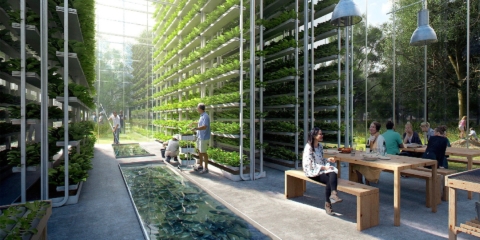Would you like to get notifications from Christian?
What happened?
Nimo Planet wants its AR glasses to replace your laptop when you’re on the go. Instead of lugging around your 3-pound machine, you’d just grab your Nimo, a slim Bluetooth keyboard, and a mouse (or maybe something like this). Wear the glasses at the airport or coffee shop, and the dual displays on the edge of each lens will serve up to six virtual screens so you can continue typing away. So, soon you may be able to leave all those devices with their own screens at home, thanks to new smart glasses that will make device screens virtual and holographic. These glasses, called “augmented reality” or “AR” glasses, are being developed by several companies and are already being used by some early adopters. The potential applications for AR glasses are vast, but one thing is certain: they will change the way we interact with technology.
Why is this important?
I believe high-resolution AR (augmented reality) and MR (mixed reality) glasses will eventually dematerialize many physical screen devices by making device screens virtual and holographic! Why spend money on an expensive television or monitor when these pixel/screens can also be projected holographically in the air? In the last few years, physical media like newspapers have been replaced by their digital versions; physical DVDs disappeared almost entirely from stores along with physical CDs too! And in the next few years, we will see the same with physical hardware devices. Computer server hardware has already gone virtual, for example, we are now able to run 10 to 100 virtual servers on one physical server. And computer screens are next. The more screens that will become virtual and holographic the fewer hardware screens we have to manufacture, the less we pollute the environment.
Christian is a futurist and trendwatcher who speaks about the impact of exponential technologies like AI on organizations, people, and talents. Christian tailors his presentations to your audience’s specific industries and needs.




Embracing the advancements of technology and AI can enhance our humanity. We can focus on developing our unique talents and skills by automating mundane tasks and freeing up our time. As humans, we can adapt and learn, allowing us to evolve and stay relevant in a rapidly changing world constantly.


Organizations will need to be more fluid, dynamic, and adaptable: the ability to change and adjust in response to new situations and environments. We are on the cusp of a new era of organizations, ones that are more fluid and agile and which behave like swarms we see in nature.




In the future, 3D printing and generative design will allow for products to be designed in a more decentralized manner, and production will take place closer to the customer and fully on-demand. 3D printing technology will also allow for more customization and personalization of products.


The agricultural industry is ripe for disruption. Robotics, AI, and IoT are all technologies that have the potential to radically transform the way we grow food. In combination with vertical farming, these technologies could increase the efficiency and quality of agricultural products.

A human-centered society is one that puts people first and where technology is used to unite and empower people. It is a society that values biological life and dignity above all else. It is a society that recognizes the importance of human relationships and works to strengthen them. In a human-centered society, all members of the community are valued and treated with respect.


The future of healthcare is here. New technologies like AI, IoT, big data, and smart sensors make it possible to become the CEO of your own health. Imagine that your phone can listen to your voice and AI algorithms can detect small nuances in the tone of your voice that indicate specific diseases.
